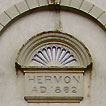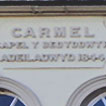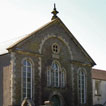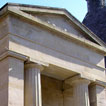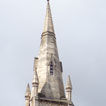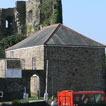Nonconformist chapels
Up until the Civil War, the national church had mostly managed to accommodate all shades of Protestant opinion. However, under the Commonwealth a purge was carried out of clergy who the Puritans did not feel were took religious sufficiently seriously, and they were replaced by men more in sympathy with the new official view.
At the Restoration in 1660, a series of measures was passed to purge Puritanism from the Church of England. Under the Act of Uniformity, use of the Book of Common Prayer was made compulsory for all services, with the result that clergy who rejected it were driven from their parishes. Their response was to set up independent congregations, a move that the authorities attempted to thwart with a ban on more than five people who were not part of the same household from assembling for worship, and forbidding nonconformist ministers from coming within five miles of towns or their former parishes. However within a few years nonconformist services ceased to be criminalised and a certain number of chapels were permitted to be founded, provided that their ministers obtained royal approval. This was the start of what became known as the Old Dissent, a term covering Baptists, Congregationalists, Quakers and Unitarians.
Relations between the established church and the Dissenters continued difficult into the 18th century, as the authorities sought to make life difficult for those who wanted to worship in their own way. But the Church of England did not have everything its own way. During the 1730s a number of its members, dissatisfied with the general lack of spirituality in the established church, began a revival movement. They were dubbed 'Methodists' by their opponents, a disparaging nickname that was first given to John Wesley and his friends. At the heart of the movement was public preaching, and the 'societies' formed by people meeting together with others in their rea for mutual help and encouragement in living a truly Christian life.
Methodism in Wales was a largely home-grown affair. The movement began in Mid and South Wales, and its first two leading lights, Daniel Rowland and Howel Harris, travelled around preaching and organising societies. The Welsh Methodists were happy to collaborate with their English counterparts although most of them later split from the Wesleyan Methodists over the doctrine of predestination. Although Methodists originally saw themselves as loyal members of the Church of England, the Anglican hierarchy disagreed, and in 1811 they were forced to register themselves as a separate denomination, Calvinist Methodists, in order to stay within the law. They eventually renamed themselves the Presbyterian Church of Wales.
The heyday of Nonconformity in Wales was the 19th century. The industrialisation of the south saw thousands of people flock to the mines, the ironworks and the copperworks. Whilst the mine and works owners promoted the establish church, their workforces were largely Nonconformist, and separate Welsh-language and English-language congregations of Independents (Congregationalists), Baptists and both sorts of Methodists as well as the less popular denominations sprang up wherever there were centres of population. Their chapels ranged from modest self-build structures to elaborate monuments designed by some of the leading architects of the region.
